ROPE ACCESS AND DIFFICULT ACCESS WORK
Rope access and difficult access interventions carried out on complex structures, cliffs, industrial or confined works, with controlled safety.


INTERVENE WHERE OTHERS CANNOT GO
SIDON operates on complex structures, in confined spaces, or in areas inaccessible by traditional means, thanks to its team of professional rope access technicians, trained, experienced, and certified by CDP Cordiste and IRATA. Our height work and difficult access interventions serve the industrial, river, port, event, and technical sectors, in environments with high safety constraints.
Our technicians are capable of working on ropes, platforms, structures, or suspension to carry out all types of maintenance, repair, securing, or installation operations, whether at height or in confined spaces. With our full control of vertical progression systems, we guarantee fast, safe, and effective interventions, even in the most extreme contexts. SIDON operates specifically on:
Art structures (bridges, viaducts, piles, cantilevers)
Industrial installations (silos, chimneys, steel frameworks, technical ducts)
River or maritime sites (quays, cliffs, dikes, pylons, port cranes)
Complex buildings or listed sites (monuments, historical structures, inaccessible zones)
Buried or confined structures (shafts, galleries, pumping stations, tanks)
Each mission undergoes a detailed risk analysis and a rigorous prevention plan, in compliance with QHSE standards and the safety regulations for working at height. Our teams are trained in rescue techniques in suspension, evacuation methods, and equipped with up-to-date and checked gear.
SIDON has the capability to intervene anywhere, even in places where no one else can access. We provide concrete solutions to your complex access challenges, with a high level of technical expertise, discretion, and responsiveness.
Drilling and coring, sawing, and drilling at height
We perform drilling, coring, or sawing operations directly on walls, concrete, or steel structures at height. These tasks allow for the integration of mechanical or chemical fixings for the reinforcement or outfitting of structures. Our tools are specifically designed for work at height to prevent any risk of falling materials.
Cutting, grinding, and sawing on ropes
Our rope access technicians carry out cutting and grinding operations in difficult-to-reach areas using portable tools. The work is always performed in pairs to ensure the operator's safety and provide immediate assistance in case of an incident. This type of intervention is ideal for partial demolition or structural adjustment projects.
Welding, grinding, and oxy-cutting at height
We perform welding and hot cutting at height using specialized equipment and thermal protection. Our teams are qualified to work on metal structures, even in challenging weather conditions. All interventions are carried out with the appropriate personal protective equipment (PPE) and reinforced fall protection procedures.
Installation of safety or fall protection nets
We install protective nets on facades, under surfaces, or around perimeters to secure work areas. These nets are mounted using anchoring, stitching, clipping, or tensioning, depending on the site configuration. Their installation ensures the protection of workers as well as sensitive areas on the ground.
Our technicians handle the assembly of structures at height, such as guardrails, signage, platforms, or walkways. The components are manually transported in bags or lifted using rigging and hoists. This type of work is especially suited for rooftops, facades, or frameworks.
Assembly of lightweight structures (signage, walkways, guardrails, etc.)
Installation of collective protection (guardrails, nets, lifelines)
We install certified collective protection systems: guardrails, lifelines, anchor points. All our installations comply with European standards (EN 795, EN 353...) and undergo rigorous inspections. These systems are essential for ensuring long-term safety in work-at-height areas.
Application of resins, paints, or technical products
We perform high-altitude applications of sealants, technical resins, paints, or specific treatments. These operations require specialized knowledge in terms of dosage, adhesion, and durability. They are often carried out on rooftops, industrial facades, tanks, or vertical walls.
Close-up visual inspection
Our teams carry out manual visual inspections, taking photos and videos for direct access. These inspections help detect cracks, delaminations, or anomalies in areas otherwise inaccessible. They are commonly used for structural diagnostics or monitoring of works.
Non-destructive testing (NDT) at height
We perform technical inspections at height using methods such as ultrasound, magnetic particle testing, dye penetrant testing, or endoscopy, depending on the requirements. These methods allow us to analyze the condition of materials without damaging the structure. They are particularly useful for inspecting welds, assemblies, or metal components.
Photogrammetry and drone capture combined with human access
We combine drone imagery with rope access inspections to provide full coverage of complex structures. This hybrid method allows for accurate 3D modeling and detailed survey of pathologies. It is ideal for large facades, silos, viaducts, or industrial frameworks.
Topographic measurements or 3D laser scanning at height
Our teams perform topographic surveys and 3D laser scanning directly from high structures. These data are used for modeling, deformation analysis, or preparation of specific works. Measurements are taken safely using lightweight, precise equipment.
Height rescue (self-rescue or victim evacuation)
We use rigging systems, hoists, and pulleys to lift or move equipment in hard-to-reach areas. These systems allow us to lift light loads without the need for cranes, providing complete autonomy. They are essential for occasional interventions on roofs, frameworks, or pylons.
Height rescue (self-rescue or victim evacuation)
Our rope access technicians are trained in vertical rescue techniques: emergency descent, victim hoisting, and fall factor management. We deploy winches, specialized harnesses, and safety lines to support high-risk operations. These skills are crucial for quick intervention in case of an accident.
Work in confined spaces and at height
We combine difficult access techniques to intervene in silos, tanks, wells, or high galleries. These environments require specific skills in ventilation, risk management, and emergency procedures. Our teams are certified for this type of mixed intervention with a high level of complexity.

OUR LOCATIONS
10 Rue Félix Brun
69007, Lyon, France
Copyright © 2025 – Mentions légales et Politique de confidentialité – Tous droits réservés – SIDON ®
NEWS & UPDATES
Don’t miss our latest updates on the blog and the most recent news on our LinkedIn page.

CALL US
+33 (0)6 51 96 40 72 (FR🇫🇷 )
